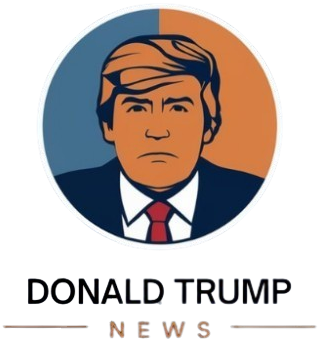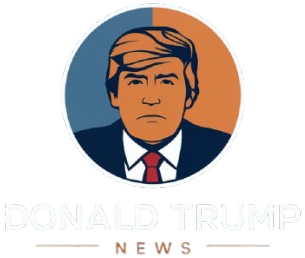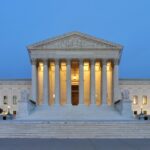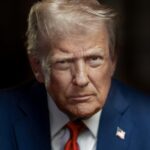Reassessing US-Iran Relations: A Historical Perspective on Future Diplomacy
The ongoing diplomatic strains in the Middle East highlight the critical nature of the relationship between the United States and Iran. This complex bilateral dynamic, often marked by suspicion and animosity, is deeply entrenched in a historical narrative that spans several decades. Key events—from the CIA-led coup in 1953 to the Iranian Revolution of 1979 and persistent disputes over nuclear capabilities—have significantly influenced contemporary interactions. As both nations look ahead, grasping this historical backdrop is essential for anticipating future developments. This article explores the complex history of US-Iran relations, shedding light on how past experiences may inform future diplomatic endeavors.
Historical Roots of US-Iran Tensions
The intricate relationship between Iran and the United States has been shaped by numerous significant events that have molded perceptions and policies from both sides. The origins of this multifaceted relationship can be traced back to pivotal moments in history such as the early 1900s, culminating with critical incidents like the 1953 coup that ousted Iran’s democratically elected Prime Minister Mohammad Mossadegh. This intervention not only bred profound resentment within Iran but also established a precedent for American involvement in regional affairs. The Islamic Revolution of 1979 represented a seismic shift, resulting in broken diplomatic ties and ushering in an anti-American regime committed to opposing US influence throughout the Middle East. The repercussions from these historical events continue to resonate today through issues such as *the hostage crisis*, economic sanctions, and military confrontations.
As both countries grapple with their current realities, several recurring themes emerge from their shared past:
- Cultural Distrust: A legacy filled with grievances fosters enduring mistrust that complicates efforts at diplomacy.
- Geopolitical Rivalries: Conflicting strategic interests often push these nations toward confrontation rather than cooperation.
- Divergent Ideologies: Differing perspectives on governance and human rights create significant ideological divides.
- Global Influences: The involvement of other world powers frequently heightens tensions affecting bilateral discussions.
This historical context is crucial as it not only informs present dialogues but also lays potential pathways for reconciliation moving forward. To illustrate this evolving dynamic further, consider this table summarizing key milestones in US-Iran relations:
| Date | Description |
|---|---|
| 1953 | CIA orchestrates coup against Prime Minister Mossadegh. |
| 1979 | Iranian Revolution establishes an Islamic Republic. |
| 1980-88 | Iran-Iraq War occurs; initial support from US goes to Iraq. |
| 2003 | Iraq invasion leads to increased Iranian influence across Iraq. |
| 2015 | Nuclear agreement (JCPOA) reached regarding Iran’s nuclear program. |
Impact of History on Diplomatic Strategies Today
The fabric woven into US-Iran relations is rich with historical threads that have consistently influenced diplomatic strategies over time. Notable occurrences like the overthrow of Mossadegh followed by his replacement with Shah Pahlavi—and later his expulsion during revolutionary upheaval—illustrate how past conflicts continue shaping modern negotiations between these two nations. These events contribute significantly to an atmosphere rife with distrust which complicates current communications.
Additions such as recent negotiations surrounding nuclear agreements alongside ongoing sanctions underscore complexities inherent within this bilateral relationship framework shaped by earlier incidents like those during hostages’ captivity crises emphasize challenges faced when attempting mutual trust-building initiatives today.
Key factors currently influencing diplomatic strategies include:
- Persistent Grievances: Resentments rooted deep within previous interventions still resonate strongly today .
- Shifting Alliances : strong > Changes occurring since late twentieth century inform foreign policy frameworks adopted by each country . li >
- < strong >Media Narratives : strong > How each nation portrays itself influences domestic support levels towards pursuing diplomacy . li >
ul >Examining timelines detailing interactions provides valuable insights into understanding contemporary diplomacy landscapes effectively illustrated below:
Date th > Description th >
< / tr >
< /thead >1953< / td > Coup d’état removing Prime Minister Mossadegh.< / td > tr > 1979< / td > Iranian Revolution sparks Hostage Crisis.< / td > tr > 2015< / td > Nuclear Deal (JCPOA) signed.< / td > tr >< < 2018< / td >< (US withdrawal from JCPOA).< / td > tr > tbody > table> Understanding these pivotal moments allows analysts better predict future interactions while offering lessons equally relevant now compared against those experienced previously .
Constructive Engagement Between America & Iran: Future Recommendations
A productive engagement strategy involving both America & Iran necessitates adopting multifaceted approaches recognizing existing grievances while promoting shared interests simultaneously . Establishing effective channels prioritizing dialogue over conflict could yield benefits for all parties involved moving forward . In addition , implementing specific strategies may help cultivate cooperative atmospheres conducive towards collaboration :
- Incremental Confidence-Building Measures :  ; Small agreements addressing counter-terrorism or climate change could serve foundational groundwork leading up larger negotiations down line .
- Trade Initiatives : span >  ; Exploring economic collaborations alleviating sanction pressures benefiting Iranian economy overall .
- Cultural Exchanges : span >  ; Facilitating programs enhancing citizen-to-citizen interaction fostering understanding reducing stereotypes prevalent among populations involved .
Moreover , establishing structured frameworks guiding future negotiations might address contentious issues more effectively through setting up focused working groups tackling key topics including nuclear proliferation cybersecurity etc., recommended approach outlined below :
<Area Focus> th >< <Potential Benefits> th ><
/ tr > ;Nuclear Agreement Revisions
Increases regional security global non-proliferation efforts.Human Rights Dialogues
Fosters accountability encourages policy changes.Regional Stability Initiatives
Paves way collaborative efforts combating common threats.The Way Forward
In summary , navigating evolving dynamics characterizing relationships between America & ;Iran finds itself at crucial juncture defined intricately woven tapestry comprising cultural exchanges political maneuverings along historic lines drawn previously . As they traverse multifaceted paths laid out before them lessons gleaned prior will undoubtedly play vital roles determining trajectories ahead ultimately impacting stability regionally globally alike .Ongoing attempts foster constructive engagements coupled lingering echoes grievances suggest pathways requiring strategic foresight willingness engage dialogues actively pursued together collaboratively seeking resolutions beneficial all stakeholders involved watching closely unfolding scenarios unfold remains uncertain whether transcend antagonisms pursue stable cooperative relationships desired outcomes achieved high stakes exist not just two countries but entire regions security landscape overall too !
- < strong >Media Narratives : strong > How each nation portrays itself influences domestic support levels towards pursuing diplomacy . li >









